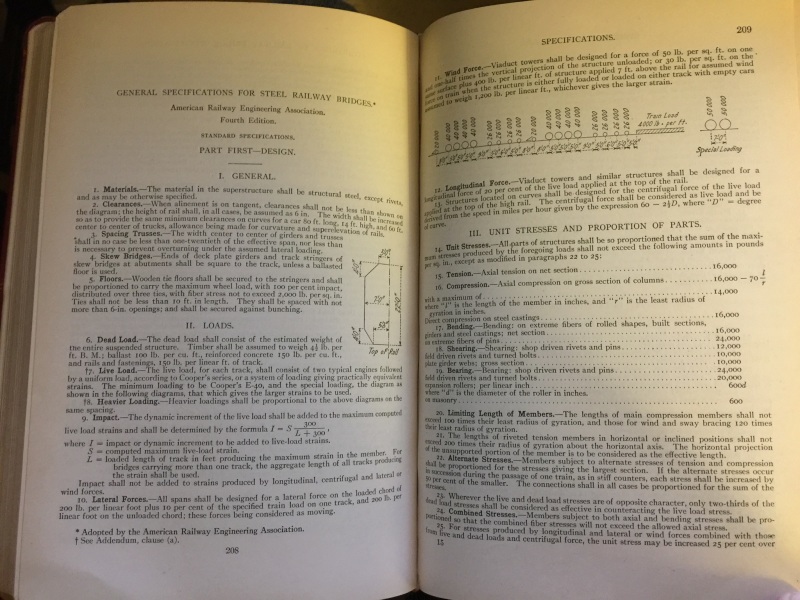HeavyCivil
Structural
- Aug 5, 2009
- 184
My firm has been tasked with replacing the bearings on a through-truss railroad bridge. The bridge was built in 1927 and was originally property of the Delaware and Hudson. The span is long so the jacking loads are quite high - the bridge weighs over 700 Tons. Analyzing the connections is fairly simple, but using the lowest allowable stress value for rivets listed in AREMA produces unsatisfactory capacity in the floorbearm-bottom chord connection to jack under the floor beam. A502 Grade 1 Hand Driven rivets give you 11ksi allowable shear according to AREMA. AISC lets you use a higher value.
Analyzing the plans shows lots of information about the geometry but nothing about the material properties. It does reference a standard "D+H Co 1914 Spec". Does anyone know where one could find this standard spec?
Does anyone have any information on the historic use of Grade 2 and Grade 1 rivets in Railroad structures? Grade 2 would work, but that's not an assumption I can make without a high degree of probability.
Analyzing the plans shows lots of information about the geometry but nothing about the material properties. It does reference a standard "D+H Co 1914 Spec". Does anyone know where one could find this standard spec?
Does anyone have any information on the historic use of Grade 2 and Grade 1 rivets in Railroad structures? Grade 2 would work, but that's not an assumption I can make without a high degree of probability.

![[idea] [idea] [idea]](/data/assets/smilies/idea.gif)
![[r2d2] [r2d2] [r2d2]](/data/assets/smilies/r2d2.gif)
